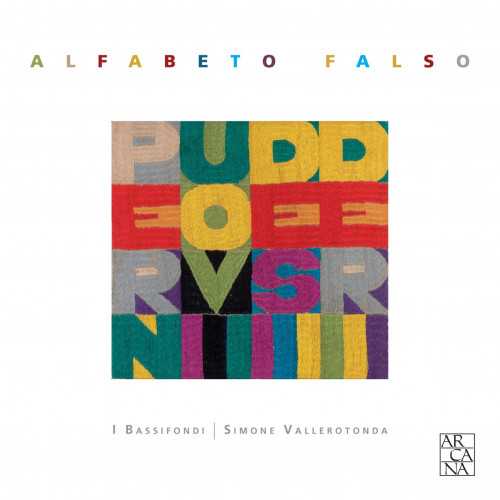
Performer: I Bassifondi, Simone Vallerotonda
Audio CD
Number of Discs: 1
Format: FLAC (tracks)
Label: Arcana
Size: 476 MB
Recovery: +3%
Scan: cover
Giovanni Paolo Foscarini (1600-1647)
01. Toccata detta l’innamorata
02. Gagliarda francese
03. Passacaglio per la O
Simone Vallerotonda
04. Impro #1
Hieronimus Kapsberger (1580-1651)
05. Sfessania
06. Passacaglia
Antonio Carbonchi
07. Scaramanzie
Santiago de Murcia (1673-1739)
08. Folias Gallegas
Ferdinando Valdambrini
09. Capona
Alessandro Piccinini (1566-1638)
10. Toccata cromatica
Josep María Martí Duran
11. Impro #2
Alessandro Piccinini
12. Partite sopra l’aria francese detta l’alemanna
13. Corrente VI sopra l’alemanna
Simone Vallerotonda
14. Impro #3
Santiago de Murcia
15. Cumbées
Angelo Michele Bartolotti (1615-1681)
16. Passacaglia per la D
Francesco Corbetta (1615-1681)
17. Passacaglia per la X
Hieronimus Kapsberger
18. Kapsberger
19. Corrente VII
Giovanni Paolo Foscarini
20. Aria di Firenze
21. Colascione
22. Los Impossibles
23. Impro #4
After the success of ‘L’ultimo romano’, his album of music for archlute from the 1718 collection of the Roman composer Giovanni Zamboni, Simone Vallerotonda presents something totally new with his Baroque ‘power trio’ I Bassifondi: ‘Alfabeto falso’. Their debut album is devoted to Italian and Spanish music for guitar and theorbo from the first half of the seventeenth century.
A little-known repertory, characterised by rhythmic oddities and harmonic extravagances that challenge those of contemporary jazz. Ordinary ‘alfabeto’ (alphabet) was the system used by guitarists of the period to mark chords: each letter corresponded to a single chord. But, in the ‘false alphabet’, those letters which were marked with a slash indicated chords containing dissonances, often very bold. The trio, comprising guitar/theorbo, percussion instruments and colachon, reconstructs an ensemble typical of the seventeenth century. Breathtaking rhythms, ‘dirty’ chords, improvisations and variations: these are the colours they seek to convey in their sound. The beauty and the challenge of this disc lie precisely in providing an interpretation that respects everything notated in the score, and in the choice of arrangements and timbres. This music sounds modern and perhaps slightly provocative to us, but all of it was written around 1640!